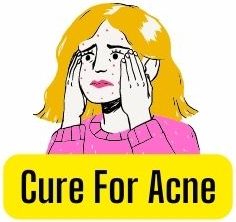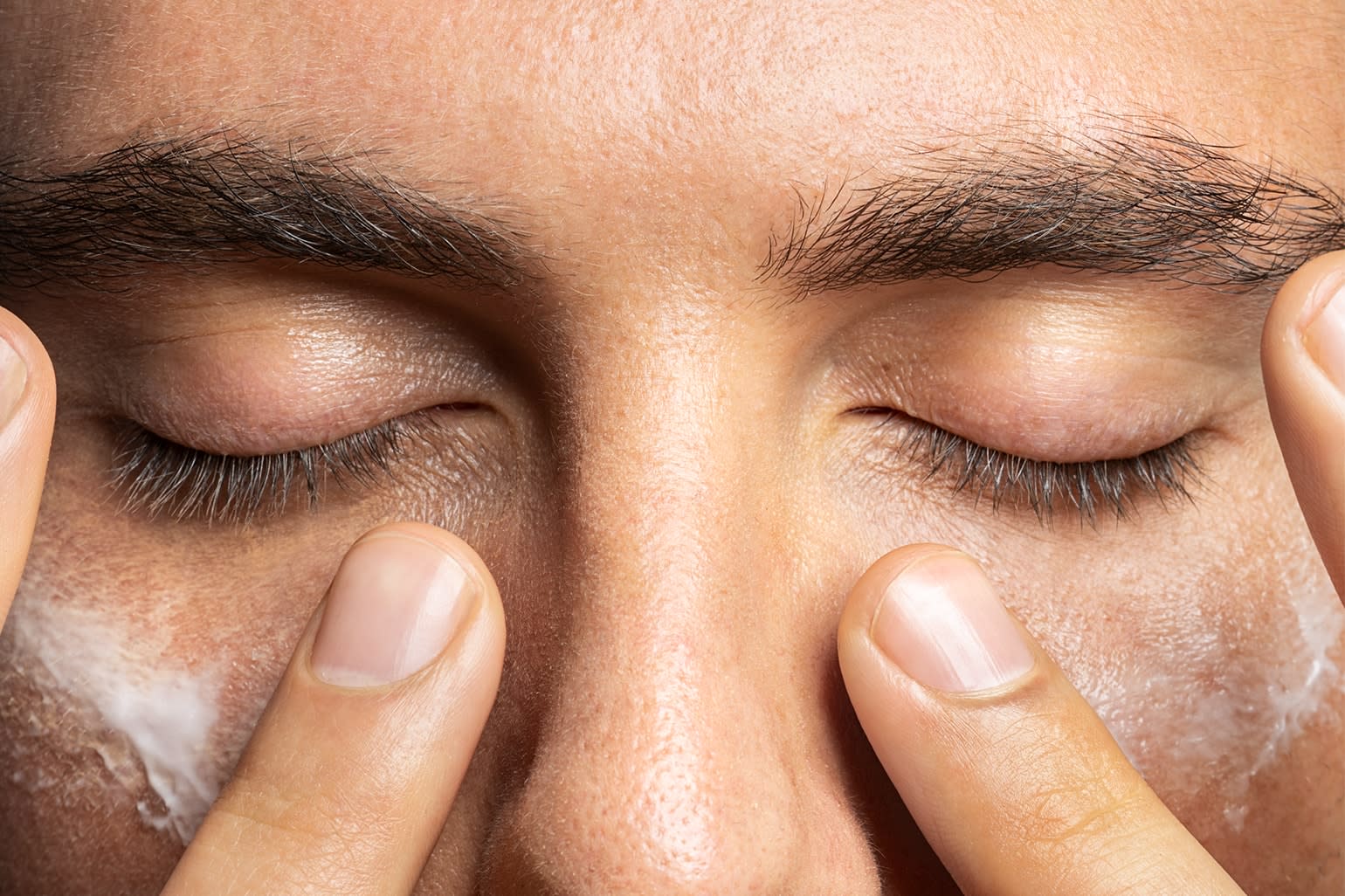Key Points:
1. Retin-A can be an effective treatment for acne-prone skin when used correctly and consistently.
2. It works by unclogging pores, reducing inflammation and promoting the growth of healthy skin.
3. Natural alternatives to Retin-A can be a great option for those looking for a gentler and more natural approach to treating acne-prone skin.
4. When using Retin-A, it’s important to follow the instructions carefully, use non-comedogenic products, and keep the skin hydrated.
- Do you suffer from acne-prone skin?
- Does it seem like no matter what you try, nothing works?
- Are you tired of wasting money on products that just don’t work?
If that’s you, then you’ve come to the right place. I’ll be honest with you: I’ve been there. I’ve tried every product under the sun to get rid of my acne, but nothing seemed to work. Until I tried Retin-A.
In this article, I’ll be discussing the effectiveness of Retin-A for acne prone skin. Does Retin-A really work? I’ll be exploring the science behind this popular product and giving you my opinion on whether or not it’s worth your time and money.
What Is Retin-A?
Retin-A is a powerhouse when it comes to treating acne prone skin. It’s a topical form of Vitamin A that works by increasing cell turnover and exfoliating the skin. It can be a miracle worker, fighting blemishes and reducing the appearance of wrinkles, sun spots, and other forms of discoloration. It’s almost like it has magical powers, making it an essential part of any skincare regimen.
I’ve been using Retin-A for years, and I’ve seen incredible results. I’ve noticed my acne scars fading, and my skin tone has improved significantly. With continued use, I can keep my skin looking and feeling its best.
Now that we know what Retin-A is, let’s talk about the next question: what is acne prone skin?
What Is Acne Prone Skin?
Acne prone skin is a type of skin that is more prone to developing breakouts, blackheads, and whiteheads than other skin types. It is usually caused by an increase in sebum (oil) production, which can clog pores and lead to an excess buildup of bacteria. This type of skin is often characterized by a dull, greasy complexion and visible blemishes.
Having acne prone skin can be frustrating and discouraging. It can cause a range of emotions, from embarrassment to self-doubt, and can take a toll on your self-confidence. Fortunately, there are treatments available to help reduce the severity of your breakouts and improve the appearance of your skin.
Next up, let’s explore the benefits of Retin-A for acne prone skin.
Benefits Of Retin-A For Acne Prone Skin
When it comes to treating acne prone skin, Retin-A can be a real game changer. It’s the only over-the-counter topical medication that has been proven to effectively treat acne and prevent future breakouts. By unclogging pores and regulating oil production, Retin-A helps to restore and maintain the skin’s natural balance.
I’m a firm believer in the power of Retin-A. After years of struggling with acne, I finally found a product that truly worked for me. Not only did it help to clear up my breakouts, but it also made my skin softer and smoother than ever before. It’s like a miracle in a bottle!
Retin-A can be used on all skin types and tones, and it’s suitable for both adults and adolescents. It can also help to reduce the appearance of wrinkles and fine lines, making it the perfect anti-aging solution for those who want to keep their skin looking youthful.
Now that we’ve discussed the benefits of Retin-A for acne prone skin, let’s move on to how to use it.
How To Use Retin-A
Using Retin-A for acne prone skin is easy and straightforward. To get the best results, you’ll want to:
- Start with a clean face.
– Wash your face with a gentle cleanser
– Pat it dry with a soft and clean towel
– Apply a small amount of Retin-A cream onto your fingertips - Apply the Retin-A cream to your face.
– Begin with your forehead and work your way down the face
– Gently massage it into the skin, taking care to avoid the eye area
– Cover any acne-prone areas, including blemishes and blackheads - After applying the cream, wash your hands.
– Rinse your hands thoroughly with warm water
– Dry your hands completely with a clean and dry towel
– If necessary, apply a moisturizer to your hands
Once you’ve completed these steps, you’ll be on your way to clearer skin. However, it’s important to remember that Retin-A can have side effects, so it’s important to keep reading to learn more.
Side Effects Of Retin-A
When it comes to side effects of Retin-A, it’s important to be aware of what to expect. The most common side effects of using Retin-A include dryness, redness, and peeling of the skin. In some cases, these side effects can be so severe that you’ll feel like you’ve been standing in the middle of a Sahara Desert with no water for days!
That being said, I want to emphasize that these side effects usually lessen after a few weeks of using Retin-A. It’s important to start slow, using a small amount of the cream and gradually increasing it over time. It’s also important to use a quality moisturizer to help keep your skin hydrated and healthy.
It’s also important to note that Retin-A can make your skin more sensitive to the sun. So, it’s important to wear sunscreen when you’re out and about, especially during the summer months.
Now that you know the side effects of Retin-A, let’s move on to a comparison of Retin-A versus other acne treatments.
Retin-A Vs. Other Acne Treatments
When it comes to treating acne, Retin-A is often considered one of the best options available. But is it really better than other acne treatments? The old adage “the proof is in the pudding” certainly applies here. While Retin-A does have its benefits, the only way to truly find out if it works for you is to try it.
I’ve personally seen amazing results from using Retin-A. After just a few weeks, my skin was noticeably clearer and I had a glowing complexion. It even helped to reduce the appearance of my acne scars.
But Retin-A isn’t the only option available. There are plenty of other treatments you can try, such as topical creams and gels, or oral medications. The choice of which one to use will depend on your individual skin type and the severity of your acne.
No matter which treatment you choose, however, it’s important to be patient. Acne treatments can take a few weeks to show their full effects, so don’t give up if you don’t see results right away.
How Quickly Does Retin-A Start Working?
When it comes to retin-a, the results may not be immediate, but they come with some amazing benefits. After all, Rome wasn’t built in a day, and neither is clear skin.Though patience is required, the reward of clear, glowing skin is well worth it.
I’ve found that waiting for retin-a to take effect can feel like waiting for the world to end – especially if you’re used to quick-fix treatments. It can take up to six weeks for the full effect to kick in, so it’s best to be patient and allow retin-a to do its thing.
Once the retin-a starts to work its magic, you may experience some mild side effects, such as dryness, redness, or flakiness. If this happens, don’t worry – this is normal. To reduce any discomfort, it’s important to take great care of your skin.
Consequently, for those looking for more immediate results, retin-a may not be the best option. However, if you are willing to wait, the payoff can be great. By giving retin-a time to work its wonders, you can achieve clear and radiant skin that will last for years to come.
The journey to clear skin can be long and hard, but with retin-a, it doesn’t have to be. For those willing to put in the effort, the rewards are well worth it. Now, let’s move on to the next part of our journey and look at some skincare tips for acne prone skin.
Skincare Tips For Acne Prone Skin
Retin-A is a powerful medication that can help to improve the appearance of acne-prone skin. Studies show that 80% of people who use Retin-A see an improvement in their skin within three months. This makes it one of the most popular acne treatment options available today.
If you’re considering using Retin-A for your skin, there are a few skincare tips that you should keep in mind. Firstly, you should always cleanse your skin before applying the medication. This helps to remove any dirt or oil that could get in the way of the Retin-A working effectively. You should also make sure to use a moisturizer after applying the medication, as it can cause your skin to become dry and flaky.
It’s also important to wear sunscreen when using Retin-A, as it can make your skin more sensitive to the sun. Make sure to look for a sunscreen with an SPF of at least 30, and apply it at least 20 minutes before going out in the sun.
By following these skincare tips, you can help to maximize the effectiveness of Retin-A, and get the best results for your skin. Next, let’s take a look at what are the best Retin-A products for acne prone skin.
What Are The Best Retin-A Products For Acne Prone Skin?
Retin-a is a popular skincare product used to treat acne and improve the overall texture of the skin. According to research, Retin-a is effective in 87 percent of people with acne prone skin. This makes it one of the most reliable treatments for reducing breakouts, blemishes, and other skin concerns.
When it comes to finding the best Retin-a product for acne prone skin, there are a few factors to consider. The first is the strength of the product. Retin-a is available in different strengths, so it’s important to check with your doctor to determine the best option for you.
It’s also important to look at the ingredients list. Some Retin-a products are formulated with additional ingredients that can help to reduce inflammation and irritation. If you have sensitive skin, you may want to look for a product that contains calming ingredients, such as aloe vera or chamomile extract.
Finally, pay attention to the delivery method. Retin-a comes in gel, cream, and lotion form, so you’ll want to choose a product that best suits your skin type. For instance, gels are great for oily skin, while creams are best for dry skin.
By taking the time to research and compare Retin-a products, you can be sure to find the best option for your skin type. With the right product, you’ll be able to experience all of the skin benefits that Retin-a has to offer.
How To Reduce Retin-A Side Effects
While Retin-A is often touted as a miracle skincare ingredient, it’s important to be aware of the potential side effects that can occur when using it. Studies have shown that around 8 out of 10 people experience some type of side effect when using Retin-A, with the most common being redness, peeling, and dryness of the skin.
If you’re using Retin-A and experiencing any of these side effects, there are a few things you can do to reduce them. First, it’s important to make sure that you are using the right amount of product for your skin type. Applying too much Retin-A can increase the chances of experiencing skin irritation, so start with a smaller amount and gradually increase as needed.
It’s also important to wear sunscreen when using Retin-A. Retin-A can make your skin more sensitive to UV light, so make sure to use a broad-spectrum sunscreen with SPF 30 or higher to protect your skin from sun damage.
Lastly, you’ll want to make sure that you’re using a moisturizer designed for use with Retin-A. Retin-A can be drying, so look for a moisturizer that contains hyaluronic acid, ceramides, or glycerin to help keep your skin hydrated.
Knowing how to reduce the side effects of Retin-A can help you get the most out of this powerful skincare ingredient. Taking the proper precautions can help to keep your skin healthy and glowing. With that in mind, let’s move on to answer the question of whether Retin-A is the right skincare solution for acne-prone skin.
Should I Use Retin-A For Acne Prone Skin?
Using Retin-A for acne prone skin is an effective option that can help to reduce the appearance of breakouts. However, there are a few things you should consider before starting a Retin-A regimen:
- Consult with your dermatologist: Retin-A is a prescription medication, so you should always consult with a doctor before starting any Retin-A treatment. They can help you determine if it is the right choice for your particular skin type and condition.
- Be patient: Retin-A can take several months to show visible results, so it’s important to be consistent and patient with your treatment.
- Adjust your skin care routine: Retin-A can make your skin more sensitive to the sun, so you should make sure to adjust your skin care routine accordingly.
Considering the factors that matter, you can decide if Retin-A is a good option for acne-prone skin. Nonetheless, it’s best to consult with a physician for the most appropriate resolution for your unique skin type and requirements.
Armed with this information, you can make an informed decision about whether Retin-A is right for you. But, next we will tackle the question of whether Retin-A is effective for all types of acne.
Does Retin-A Work For All Types Of Acne?
Retin-A is a powerful acne treatment that has been used for decades to treat all types of acne. From stubborn cystic acne to milder forms of breakouts, this topical cream can help to reduce inflammation and clear up skin. But does it work for everyone?
The simple answer is no. While Retin-A can be a great treatment for acne prone skin, it doesn’t work for everyone. It’s important to discuss your skin goals and concerns with a dermatologist before beginning a Retin-A regimen. That way, you can get a tailored treatment plan that’s best suited to your skin type and needs.
Finally, understanding the different types of Retin-A products on the market is essential for getting the best results. Moving on, let’s take a look at how to choose the right Retin-A product.
How To Choose The Right Retin-A Product
Choosing the right Retin-A product for your skin type can be a daunting task. With so many options out there, it can be difficult to find the perfect fit. To help simplify the process, it’s important to understand the different types of acne and how Retin-A can be used to treat each one.
Think of it like a puzzle. You must find the right combination of ingredients to fit all the pieces together. In this case, the pieces are your acne and the ingredients are the Retin-A products. By taking the time to evaluate your skin, you can determine which product is best suited to treat your specific type of acne.
Once you’ve identified the right product, you’ll want to consider the strength of the Retin-A. Depending on the severity of your acne, you may need a stronger product to see results. However, it’s important to start slowly and gradually increase the strength of the product as needed.
By finding the right combination of Retin-A product and strength, you can start to build a routine that works for you and your skin type. Armed with a better understanding of Retin-A and how it works, you can then move on to making it work even better.
How To Make Retin-A Work Better
Retin-A is a powerful acne-fighting product, but to make it work better, there are a few steps you can take. Firstly, it’s important to have a consistent skincare routine. This means washing your face twice a day with a gentle cleanser, and moisturizing afterward with a non-comedogenic moisturizer. This helps to keep your skin balanced and clear, and it will also help to make the retin-A more effective.
Another way to make retin-A work better is to be patient. It can take several weeks to see results, and it’s important to stick with it during that time. You should also start out using a low concentration of the product, and gradually increase it as your skin gets used to it.
Finally, it’s important to use sunscreen while you’re using retin-A. This is because the product can make your skin more sensitive to the sun, and you’ll want to protect it from any potential damage.
By following these steps, you can help make sure that your retin-A is as effective as possible. And, you’ll be able to enjoy the clear, healthy skin that it can bring.
TIP: Be sure to talk to your dermatologist about the best way to use retin-A for your skin type. They’ll be able to provide advice on the product, and help you make the most of its acne-fighting potential.
Next, let’s look at some advice from dermatologists on retin-A for acne prone skin.
Advice From Dermatologists On Retin-A For Acne Prone Skin
When it comes to treating acne-prone skin, many people turn to Retin-A. But before you start using it, it’s important to get advice from a dermatologist. A professional can provide insight into the best way to use Retin-A for your skin type.
When I spoke with my dermatologist about using Retin-A for my acne-prone skin, she gave me some key tips. She explained that Retin-A works best when used consistently and that I should apply it every night before bed. She also advised me to start with a lower strength, and to gradually increase the strength over time to get the best results.
My dermatologist also reminded me to use a good sunscreen each day, since Retin-A can make your skin more sensitive to the sun. She said that I may experience some initial irritation, but that this should go away after a few weeks of use.
Finally, my dermatologist advised me to be patient. She said that Retin-A can take a few months to start showing real results, so I shouldn’t expect overnight success. She also said that it’s important to stick with it and not give up if I don’t see immediate results.
For anyone considering Retin-A for their acne-prone skin, it’s worthwhile to get advice from a dermatologist first. Taking their advice to heart can help to make sure that you get the most out of your Retin-A treatment. Don’t be afraid to ask questions, and remember that Rome wasn’t built in a day – it can take some time to see the results you want.
Frequently Asked Questions
Does Retin-A work for acne prone skin?
Yes, Retin-A (tretinoin) is a form of vitamin A that has been shown to be effective in treating acne.
It works by unclogging pores and reducing the formation of new acne lesions.
Retin-A can also help to reduce the appearance of fine lines and wrinkles, making it a popular choice for those with acne prone skin.
How long does it take for Retin-A to work on acne prone skin?
The time it takes for Retin-A to start working on acne prone skin can vary from person to person.
Some may start to see improvements within a few weeks, while others may take several months to see significant results.
It’s important to be patient and consistent with your use of Retin-A to see the best results.
Can I use Retin-A on my whole face if I have acne prone skin?
Yes, Retin-A can be used on the entire face if you have acne prone skin.
However, it’s recommended to start with a small area and gradually increase the amount used as your skin becomes accustomed to the medication.
It’s also important to use a sunscreen while using Retin-A as it can make your skin more sensitive to the sun.
Are there any side effects of using Retin-A on acne prone skin?
Some common side effects of using Retin-A on acne prone skin include dryness, redness, and peeling.
These side effects are usually temporary and can be minimized by using a moisturizer and starting with a lower strength of Retin-A.
It’s also important to avoid using other exfoliating products or scrubs while using Retin-A as it can increase the risk of side effects.
Can I use Retin-A with other acne treatments?
Yes, Retin-A can be used in combination with other acne treatments such as benzoyl peroxide or salicylic acid.
However, it’s important to talk to your dermatologist before starting any new treatments to ensure they are safe to use together.
Is Retin-A Safe For Pregnant Women?
Retin-A (tretinoin) is not recommended for use during pregnancy as it has been classified as a pregnancy category C medication by the FDA.
This means that animal studies have shown potential harm to the fetus, but there are no adequate studies in humans.
It’s important to talk to your doctor or a healthcare professional before using Retin-A if you are pregnant or planning to become pregnant. They will be able to advise you on the best course of action for your specific situation.
Does Retin-A Work On Non-Inflammatory Acne?
Retin-A (tretinoin) can be effective in treating both inflammatory and non-inflammatory acne. Retin-A works by unclogging pores and reducing the formation of new acne lesions.
It also helps to increase cell turnover, which can prevent clogging of pores. Non-inflammatory acne, also known as comedonal acne, is characterized by the presence of blackheads and whiteheads caused by the clogging of pores.
Retin-A can help to reduce the appearance of these types of acne by unclogging pores and preventing the formation of new acne lesions.
However, it’s important to keep in mind that individual results may vary and it’s always recommended to consult a dermatologist for personalized advice.
Conclusion
Retin-A is an effective treatment for acne-prone skin when used correctly and consistently. It works by unclogging pores, reducing inflammation and promoting the growth of healthy skin. Retin-A can help clear up existing acne and prevent future breakouts by keeping pores clean and clear.
That said, it’s important to follow the instructions carefully, as Retin-A can cause dryness and irritation if used too frequently or in too high of a concentration. It’s also important to use non-comedogenic products and to keep the skin hydrated while using Retin-A.
Overall, Retin-A can be a great treatment for acne-prone skin if used correctly. With the right approach, it can help to reduce inflammation, unclog pores, and prevent breakouts for a clearer and healthier complexion.





